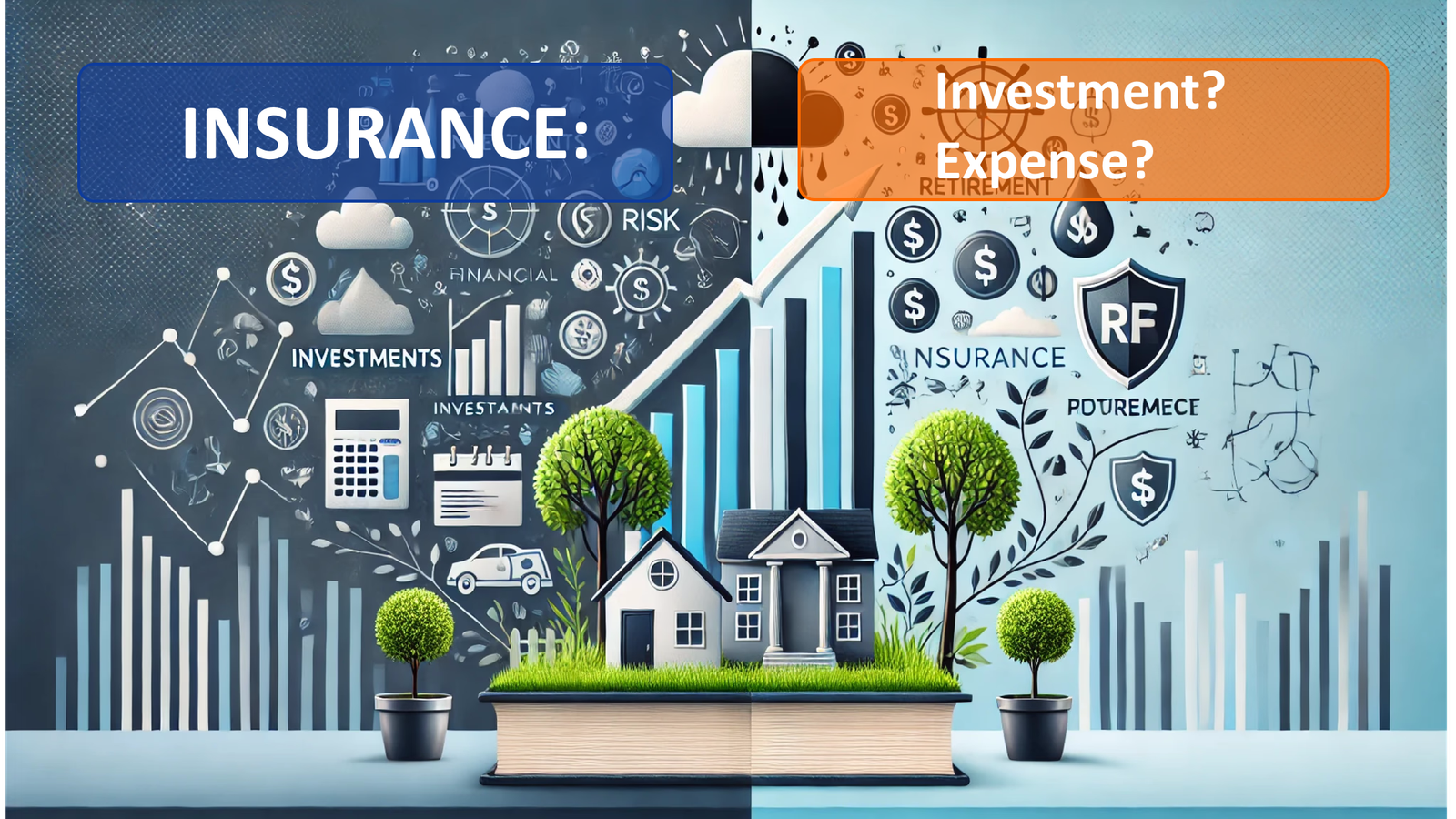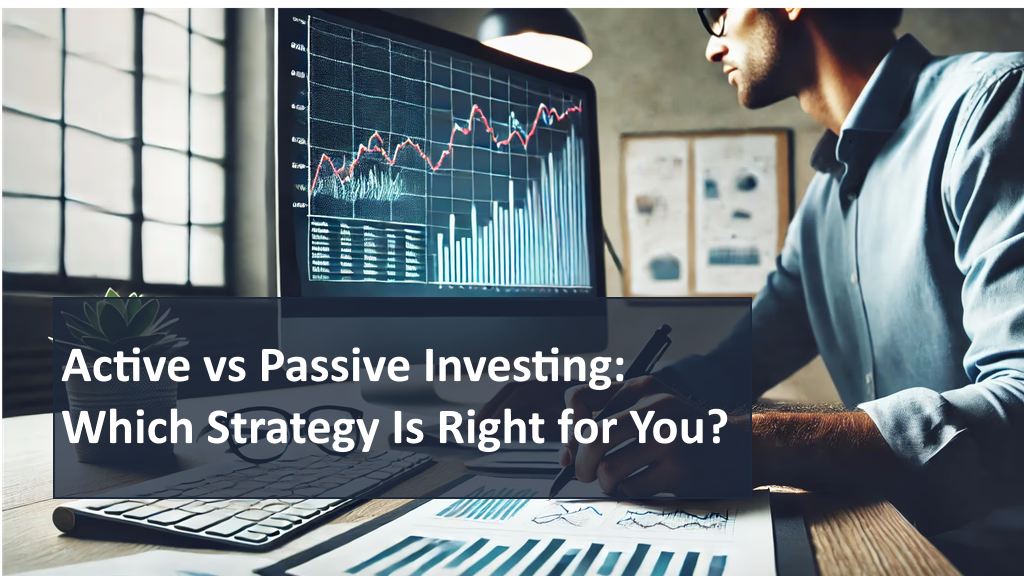Introduction
In the complex world of personal finance, insurance plays a crucial role in balancing financial protection and investment opportunities.
Many wonder whether it is more of an investment or an unavoidable expense. We already touched on this topic in this insightful article
This article explores how professionals and parents can navigate this decision wisely, ensuring future security while unlocking financial growth potential.
Here’s what we’ll cover in this article:
- The true role of insurance
- The role of investments
- Does investing through insurance make sense?
- Insurance: Tips for Professionals and Parents
The true role of insurance
Jason is a professional, married to Betty, and the sole provider for his family, with two children depending on him.
One day, he suffers a serious accident that prevents him from working for months.
Without any form of insurance, the financial burden of his absence becomes unbearable, putting his family’s well-being at risk.
This scenario, which is very common in many parts of the world, highlights the importance of insurance: protecting against life’s unexpected events.
According to a recent survey by IVASS, the Insurance Supervisory Authority, 44% of European homeowners fear earthquakes, 38% worry about gas leaks, 30% about fires, 23% about water damage, and 18% about short circuits.
On average, a European spends €300 per year on insurance (excluding mandatory car insurance), compared to a global average of €937 (data from ANIA, the National Association of Insurance Companies).
Many people try to protect themselves from major unforeseen events simply by keeping extra cash in their bank accounts.
But this is a serious mistake that can be very costly.
The issue is that liquidity alone cannot protect us from certain risks—we need insurance.
In fact:
- Insurance allows us to transfer rare but high-impact risks to a third party.
- An emergency fund, using our own liquidity, covers low-severity, low-cost risks.
In Jason’s case, relying only on his bank account balance is not enough to protect him. His condition might last for years before he can work again, forcing him to take out expensive loans.
Insurance is a crucial tool for managing such risks.
However, not all insurance policies are the same. It’s important to distinguish between real insurance and investment products—they are two completely different things.
The role of investments
Investments serve a completely different purpose compared to insurance.
While insurance is designed to protect you from risks by transferring them to other entities, investments aim to preserve or grow your wealth for future use.
Investments help you achieve various financial goals, such as buying a home, planning for retirement, or funding your children’s education.
On the other hand, insurance is meant to safeguard you from potential risks

Many investors confuse these two objectives and, believing they are adequately protecting themselves, end up using financial insurance policies.
However, these policies are among the most inefficient products available.
First and foremost, investment insurance policies have a complex structure that makes it difficult for investors to understand exactly where and how their money is being invested.
This lack of transparency leads to less informed investment decisions, higher costs, and ultimately, lower returns.
Additionally, the actual insurance component is often insufficient and does not truly transfer the risk that needs to be covered.
Upon redemption—whether at the policy’s expiration or in the event of the insured’s death—the assets are transferred to the designated beneficiary.
The policy’s value will depend on the performance of the investments in which the policyholder’s money was placed.
And the actual insurance? It’s barely there.
There are no significant “insurance” components such as coverage for death, disability, or civil liability.
Clearly, both the insurance company and the asset management firm do not operate for free.
You might ask yourself: “If these products are so disadvantageous for me, why are they constantly sold and so popular?”
Because while they may not be beneficial for you, they are highly profitable for those who sell them.
This creates a clear conflict of interest.
The more fees you pay, the more intermediaries—such as consultants, banks, and asset management firms (SGRs)—profit.
There is a double or even triple cost structure due to the involvement of an insurance component.

The only ones who benefit from this type of product are those selling you the policy.
There is a double or even triple cost structure due to the inclusion of insurance.
Does investing through insurance make sense?
Does it make sense to invest in insurance?
Yes, if we are talking about traditional insurance.
However, it does not make sense to invest THROUGH insurance.
These are two completely different concepts, as we have already pointed out.
Life insurance policies should not be considered an investment strategy.
Let’s take a closer look at the different types of financial insurance policies.
Branch I Policies – Separate Account Management
This type of policy generally includes Italian government bonds or investment funds that hold Italian government bonds.
Among the various types of policies, these are the least problematic.
Although their costs are lower than those of unit-linked and mixed policies (which we will examine shortly), they still remain high.
This is especially significant considering that the expected real return of these policies is very low, as they primarily invest in government bonds.
Branch III Policies – Unit-Linked
These policies invest in mutual funds selected based on the preferences of the policy manager.
As a result, they tend to involve:
- Extremely high and unjustified costs;
- Performance that fails to generate additional returns compared to what could be achieved through a more efficient investment strategy.
According to IVASS, in the case of multi-branch and unit-linked policies, annual returns are reduced by approximately 2.5% to 3.5%.
Some cases even show reductions as high as 4.67%.
Mixed Policies
In theory, mixed policies combine insurance and investment.
In practice, mixed policies are a nonsensical mix:
- They do not adequately insure heirs in case of death, nor do they provide sufficient capital.
- They do not offer a good way to invest savings, for the reasons we have thoroughly analyzed in all policies.
Insurance: Tips for Professionals and Parents
Now that we have addressed the true difference between real and presumed insurance, here are some practical tips to optimize the use of insurance and investments:
Tip #1: Assess your needs
Before signing any policy, it’s essential to conduct a thorough analysis of your needs.
Consider your family, work, and financial situation.
For example, if you are a freelancer, professional liability insurance might be crucial to protect yourself from potential disputes.
These policies cover damages caused during the course of your professional activities.
In most cases, they are mandatory, and a minimum coverage amount is also set by your professional category.
Carefully evaluate the coverage limits based on the profession you practice.
It’s not worth risking a career and years of hard work to save a few hundred euros a year by opting for minimal coverage.

It is worth considering a permanent disability insurance policy for illness and accidents.
With this policy, you, as the insured, pay an annual premium, and the insurance company commits to providing you with a lifetime annuity, or a lump sum along with an additional lifetime annuity, in the event that you become disabled.
This coverage is designed for cases of severe permanent disability, typically considered when the disability exceeds 67% (in some cases, it may be as low as 65%).
Severe permanent disability essentially eliminates your human capital and your ability to generate income.
The purpose of this policy is to ensure that your standard of living remains unchanged in the event of work incapacity, without creating an economic burden for your family.

For parents, a term life insurance policy is essential.
The way a TCM (Term Life Insurance) policy works is very simple: you pay an annual premium to the insurance company, which, in return, commits to paying a predetermined amount to the people you designate in the event of your passing.
The purpose of a TCM policy is to financially protect your surviving family members, especially those without an income (such as children).
Remember, the best money spent is the one spent on insurance that you never have to use.
Tip #2: Avoid investment policies
Insurance and investments play distinct yet complementary roles in your financial planning.
Insurance protects you from unexpected events, while investments help you grow your capital.
It’s pointless to invest if something happens that jeopardizes your personal and financial situation.
Any efforts made in the past would be in vain.
Understanding how to use both tools strategically can make a significant difference in your long-term financial security.
And of course, avoid combining the two concepts by investing in expensive and opaque products like life insurance with investment purposes.
Advice #3: Plan
The goal of insurance is to protect you financially from serious negative events such as illness, disability, premature death, third-party damages, and more, ensuring they don’t have a financial impact on you and your family.
Planning is essential for this, and every day at Puzoy.com, we help our readers prepare for the future.
READ MORE –






